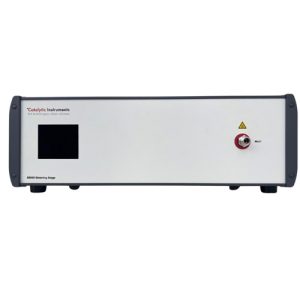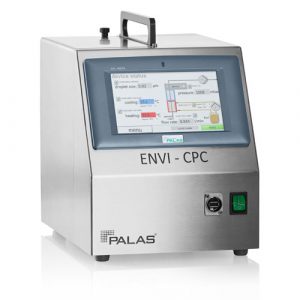Condensation Particle Counters
Condensation Particle Counters
The basic operation of a condensation particle counter involves drawing a sample of air through a saturator, which is a region filled with a vapor that is supersaturated with a condensable gas, typically butanol. The supersaturation causes the condensable gas to condense onto any particles present in the air sample, forming droplets around the particles.
The droplets then grow by further condensation as they move through a region with a lower supersaturation, called the growth region. Finally, the particles are counted by a detector that detects the light scattered by the droplets.
-

Catalytic Instruments S8000 Particle Sintering Device
$0.00 -

Catalytic Instruments Silver Particle Generator
$0.00 -

Palas Charme Reference Aerosol Electrometer
$0.00 -

Palas ENVI CPC 100 Condensation Particle Counter
$0.00 -

Palas ENVI CPC 200 Condensation Particle Counter
$0.00 -

Palas ENVI CPC 50 Condensation Particle Counter
$0.00 -

Palas UF CPC 100 Condensation Particle Counter
$0.00 -

Palas UF CPC 200 Condensation Particle Counter
$0.00 -

Palas UF CPC 50 Condensation Particle Counter
$0.00
They are particularly useful for measuring the concentration of ultrafine particles, which can be difficult to measure using other techniques. One limitation of condensation particle counters is that they can only measure the number concentration of particles, and not their size or composition. However, condensation particle counters can be used in conjunction with other instruments, such as scanning mobility particle sizers (SMPS), to provide information on the size distribution of particles in a sample.
Catalytic Strippers & Vapor Filters
For indoor and outdoor air quality monitoring applications, we also offer a range of best in their class catalytic strippers and catalytic vapor filters for use with all brands of CPC’s, SMPS systems and related products.
